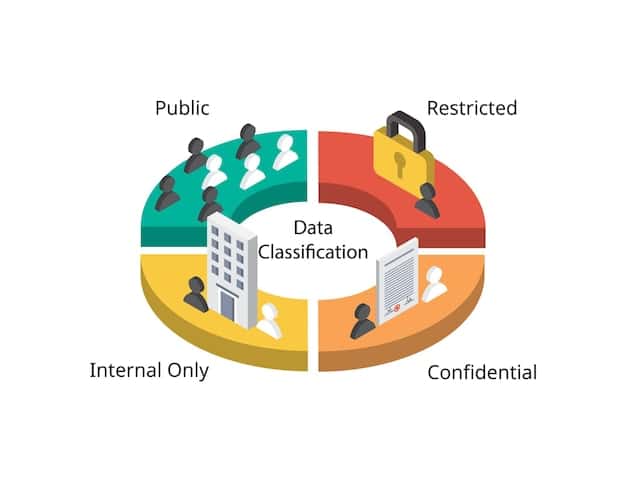Community Needs Assessment: Identifying Issues and Designing Action Projects

Community Needs Assessment: Identifying the Most Pressing Issues and Designing Effective Action Projects involves systematically collecting and analyzing data to understand the needs of a community, allowing for the creation of targeted and impactful action projects.
Understanding the needs of a community is the first step in creating positive change. A community needs assessment: identifying the most pressing issues and designing effective action projects provides a roadmap for understanding those needs and developing strategies to address them. This process enables organizations and individuals to make informed decisions and allocate resources effectively, ensuring that their efforts have the greatest possible impact.
Understanding Community Needs Assessment
A Community Needs Assessment (CNA) is a systematic process used to identify the unmet needs of a community. It involves collecting and analyzing data to understand existing problems and opportunities, enabling organizations to develop targeted and effective interventions. This process is crucial for ensuring that resources are allocated where they are needed most.
Why Conduct a Community Needs Assessment?
Conducting a community needs assessment is vital for several reasons. It helps to identify critical issues affecting the community, ensures resources are used effectively, and fosters community involvement in problem-solving.
- Identifies Critical Issues: CNAs reveal the most pressing problems that residents face, such as poverty, lack of access to healthcare, or educational disparities.
- Ensures Effective Resource Allocation: By understanding where resources are needed most, organizations can allocate funds and services efficiently.
- Fosters Community Involvement: CNAs encourage community members to participate in identifying and addressing local issues, promoting a sense of ownership and collaboration.

In summary, a community needs assessment is a powerful tool for understanding and addressing the unique challenges faced by a community. It provides a foundation for creating meaningful and sustainable change.
Steps to Conduct a Community Needs Assessment
Conducting a **community needs assessment: identifying the most pressing issues and designing effective action projects** involves several key steps, each designed to gather comprehensive data and insights. These steps ensure that the assessment is thorough and that the resulting action projects are well-targeted and effective.
Step 1: Define the Scope
Clearly define the scope of the assessment. This includes identifying the geographic area, the population of interest, and the specific issues to be addressed.
Step 2: Collect Data
Gather data from various sources, including surveys, interviews, focus groups, and existing data sets. Use both quantitative and qualitative methods to obtain a comprehensive understanding of the community’s needs.
- Surveys: Distribute surveys to a wide range of community members to collect quantitative data on their needs and experiences.
- Interviews: Conduct in-depth interviews with key stakeholders, such as community leaders, service providers, and residents, to gather qualitative insights.
- Focus Groups: Organize focus groups to facilitate discussions among community members, allowing them to share their perspectives and experiences in a group setting.
By following these steps, you can effectively conduct a community needs assessment that provides valuable insights and informs the development of targeted action projects.
Analyzing Data from a Community Needs Assessment
Analyzing the data collected during a **community needs assessment: identifying the most pressing issues and designing effective action projects** is a critical step in understanding the community’s needs. This analysis involves organizing, interpreting, and drawing conclusions from the data to inform decision-making and the development of action projects.
Data Organization
Begin by organizing the data into manageable categories. This may involve creating spreadsheets, databases, or other systems to store and analyze the information.
Identifying Themes and Patterns
Look for common themes and patterns in the data. This may involve identifying recurring issues, trends, or areas of concern that are prevalent in the community.

Effective data analysis is essential for turning raw information into actionable insights, guiding the development of action projects that address the most pressing needs of the community.
Designing Effective Action Projects
Designing effective action projects based on a **community needs assessment: identifying the most pressing issues and designing effective action projects** involves translating the identified needs into concrete plans. This process requires creativity, collaboration, and a clear understanding of the community’s resources and capabilities.
Setting Clear Objectives
Define clear, measurable, achievable, relevant, and time-bound (SMART) objectives for each action project. This ensures that the projects are focused and that progress can be tracked effectively.
Identifying Resources
Determine the resources needed to implement the action projects, including funding, personnel, equipment, and partnerships. Explore potential sources of funding and partnerships to support the projects.
- Funding: Research and apply for grants, donations, and other funding opportunities to support the action projects.
- Personnel: Recruit and train volunteers or hire staff to implement the projects.
- Partnerships: Collaborate with other organizations, businesses, and community groups to leverage resources and expertise.
By setting clear objectives, identifying necessary resources, and involving the community, you can design action projects that are both effective and sustainable.
Implementing and Evaluating Action Projects
Implementing and evaluating action projects developed from a **community needs assessment: identifying the most pressing issues and designing effective action projects** are crucial steps in ensuring their success and sustainability. These steps involve putting the projects into action, monitoring their progress, and assessing their impact on the community.
Monitoring Progress
Establish a system for monitoring the progress of the action projects. This may involve tracking key performance indicators (KPIs), collecting data on project activities, and regularly assessing whether the projects are on track to meet their objectives.
Evaluating Impact
Conduct a thorough evaluation of the action projects to assess their impact on the community. This may involve collecting data on outcomes, conducting surveys or interviews with community members, and comparing results to baseline data.
Effective implementation and evaluation are essential for ensuring that action projects are successful and that they contribute to positive change in the community.
| Key Point | Brief Description |
|---|---|
| 📍 Identify Needs | Assess community needs through data collection. |
| 🛠️ Design Projects | Create targeted action projects based on needs assessment. |
| 📊 Analyze Data | Interpret data to inform decision-making. |
| ✅ Implement & Evaluate | Monitor progress and assess project impact. |
Frequently Asked Questions
A Community Needs Assessment (CNA) is a systematic process used to identify the unmet needs of a community and to develop targeted interventions to address those needs. It involves collecting and analyzing data to understand the existing problems and opportunities.
A CNA is important because it helps organizations allocate resources effectively, ensuring that funds and services are directed to the areas where they are needed most. It also fosters community involvement and ownership of the solutions.
The key steps include defining the scope, collecting data, analyzing data, designing action projects, and implementing and evaluating those projects. Each step is essential for a thorough and effective needs assessment.
Community members can get involved by participating in surveys, attending focus groups, sharing their experiences and perspectives, and volunteering to help implement action projects. Their input is crucial for a successful assessment.
After the CNA is completed, the findings are used to design and implement action projects that address the identified needs. These projects are then monitored and evaluated to assess their impact on the community.
Conclusion
In conclusion, a **community needs assessment: identifying the most pressing issues and designing effective action projects** is an invaluable process for understanding and addressing the unique challenges faced by communities. By following a systematic approach to data collection, analysis, and action planning, organizations and individuals can create meaningful and lasting change.





